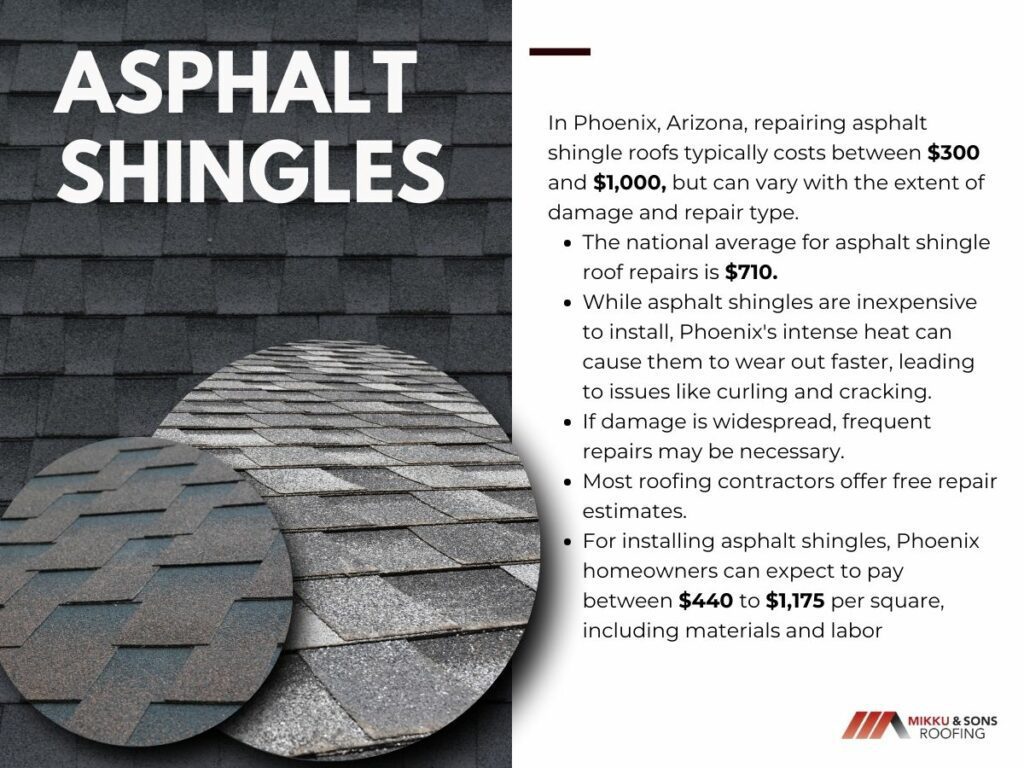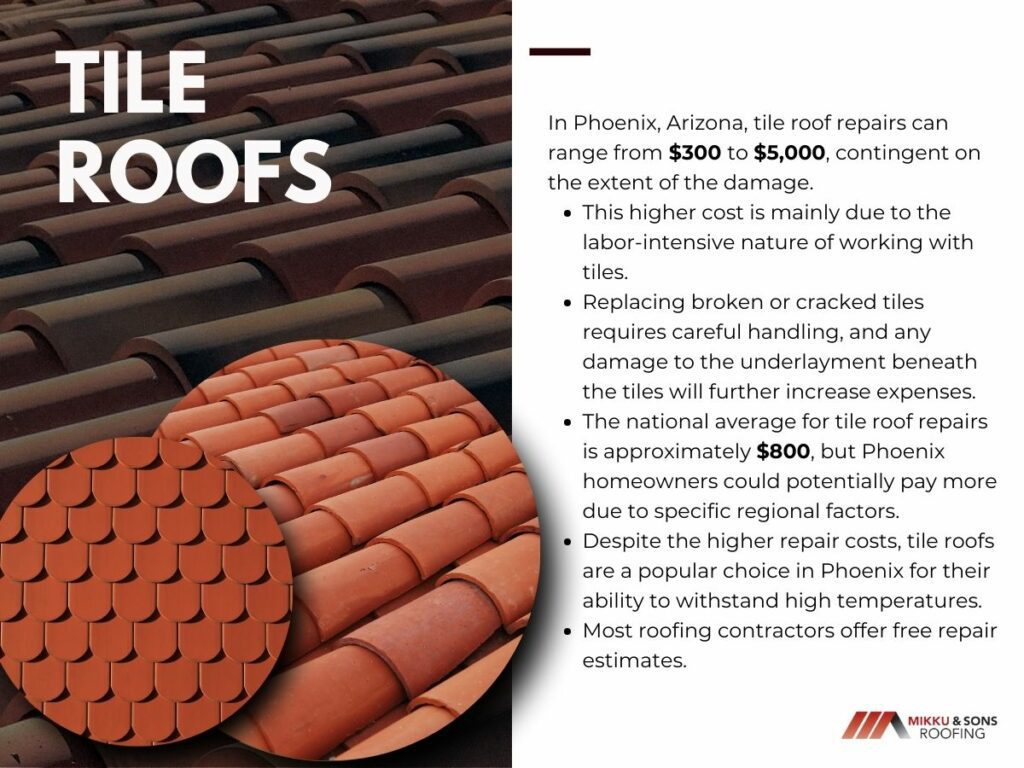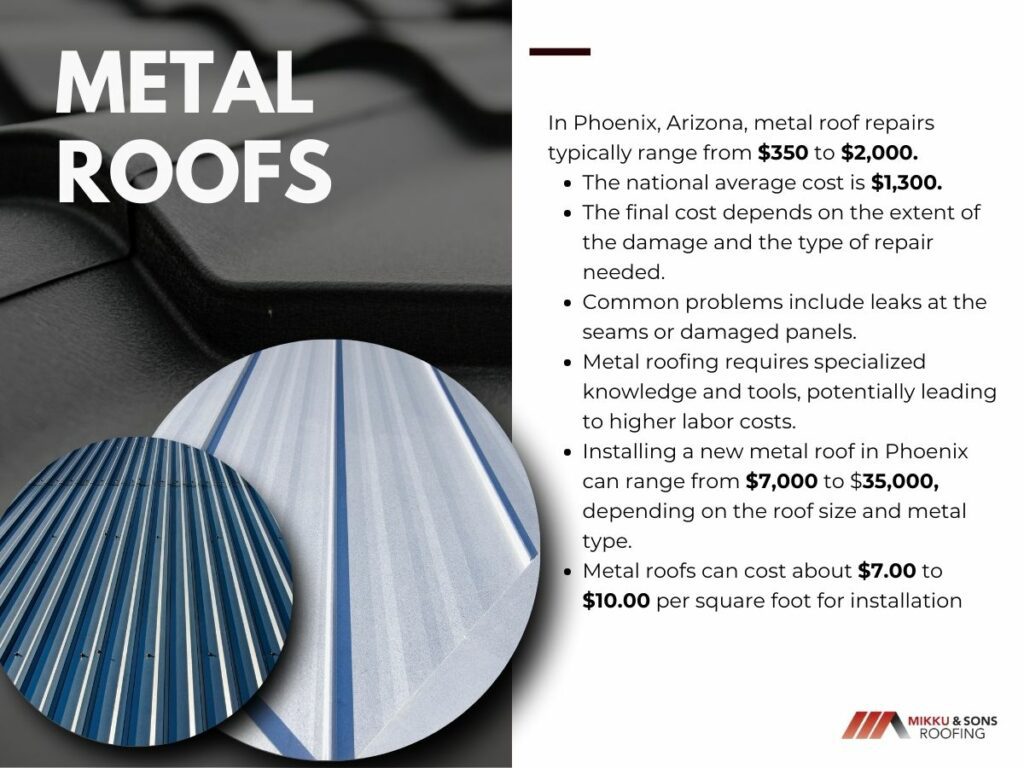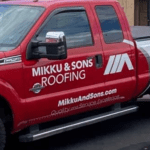
Phoenix has occasional heavy monsoon storms apart from the constant blazing sun. Your roof works to protect your home to prevent roofing damage that may bring about issues like leaks or missing shingles.
Keeping your roof in good shape is one of the most important things you can do to protect your home and everything inside it. Roof repairs fix problems as they come up and save you from any bigger ones.
A small issue could easily turn into a major expense that might warrant a total roof replacement if action isn't taken. If you’re a homeowner in Phoenix, the intense heat, sudden storms, and even dust can damage your roof faster than you might expect.
Living in Phoenix means enjoying warm winters, but it also means dealing with some extreme weather. Your roof takes on the scorching heat, sudden rainstorms, and even the occasional hail.
Monsoon storms, with their heavy rain and strong winds, can also weaken the structure or cause damage.
These weather patterns can push your roof to its limits fast and the desert climate creates conditions that are tough on roofing materials. Prolonged exposure to intense sunlight can cause materials to dry out, crack, or fade.
If you tackle a roof repair with uncertainty of potential costs you'll get surprises down the road or even get stressed. It’s important to have a clear idea of what you might spend so you can plan ahead.
Repair costs in Phoenix vary depending on several factors like the size of the damage and the type of roof you have. It can be tempting to go for the cheapest option but you need to balance quality and affordability.
Roof repairs in Phoenix depend on the type of repair needed. The good news is that not every roof issue requires a massive investment.
For smaller issues like sealing a leak or replacing a handful of shingles, you can expect to pay between $300 and $1,000. The fixes typically involve localized problems that don’t require extensive labor or materials.
Fixing minor cracks in tiles, repairing flashing, or patching up small holes usually falls into this range. If your roof has minor storm damage, like a few blown-off shingles, the cost may stay on the lower end.
Moderate repairs, such as replacing damaged underlayment or repairing larger sections of a roof, often cost between $1,000 and $5,000. More labor and materials are involved, particularly for tile roofs, where multiple tiles may need removal and replacement to access the problem area.
Flat roofs with water pooling issues or damaged membranes can also fall into this category. The repair process may involve re-sealing or adding new layers of material to ensure proper waterproofing, which increases the cost of the job.
Major roof repairs, such as fixing structural damage or replacing large sections, can range from $5,000 to $10,000 or more. These repairs are often necessary when damage has been left unaddressed for an extended period or after natural disasters.
Tile roofs, in particular, may require significant labor for these types of repairs, as tiles must be carefully removed and replaced. If water damage has compromised the roof’s structure, additional costs for framing or decking repairs can drive up the total price.
With roof repairs, the final cost isn't always straightforward because it's influenced by a variety of factors. You also need to focus on the hidden parts of the roof when checking for damage apart from the visible ones.
Small, isolated issues like fixing a single cracked tile or patching a small leak typically cost less. On the other hand, larger problems, such as widespread leaks or damage to the underlayment, require more time and materials.
If your roof has structural issues or water damage that has spread into your home, the repair bill can increase significantly. In such cases, additional work like replacing roof decking or interior repairs may be necessary, adding to the overall cost.
The material on your roof can also impact repair costs.
Roofing repairs are often in higher demand during certain times of the year, such as after monsoon season in Phoenix. During these peak periods, contractors may charge more due to increased demand.
Scheduling repairs during off-peak times can sometimes help you save money. Timing is also important when it comes to addressing damage.
Waiting too long to fix a minor issue can allow it to worsen, leading to more expensive repairs.
If the damage is in a hard-to-reach spot, such as near a chimney or skylight, contractors may need extra time and effort to complete the job. Similarly, steep or multi-level roofs often require additional safety measures, which can increase the price.
While it might be tempting to go with the cheapest option, hiring a skilled professional ensures the repair is done correctly the first time. Poor-quality repairs can lead to more problems, costing you more.
All roofs have unique layouts and materials that impact the repair costs. Some materials are affordable and easy to fix, while others require specialized skills and materials.
Some are built to handle Phoenix's intense heat better than others, but they can still face issues that require attention.
Asphalt shingles are relatively inexpensive to install and repair, with costs for minor fixes typically ranging from $200 to $1,000. Replacing damaged or missing shingles is straightforward, and materials are readily available.
However, asphalt shingles can wear out faster in Phoenix’s intense heat, leading to curling, cracking, or granule loss. If your roof has widespread damage, repairs may become more frequent.

Tile roofs are a common sight in Phoenix due to their ability to handle high temperatures. Repairing tile roofs tends to be more expensive, with costs ranging from $300 to $5,000 depending on the extent of the damage.
The labor-intensive process of working with tiles is a major factor in the higher repair costs. Broken or cracked tiles need to be carefully replaced, and if the underlayment beneath the tiles is damaged, it adds to the expense.

Metal roofs are growing in popularity for their energy efficiency and ability to reflect heat. Repairs for metal roofs usually cost between $500 and $3,000.
Common issues include fixing leaks at seams or replacing damaged panels. Because metal roofs often require specialized knowledge and tools for repairs, labor costs can be higher.

Flat roofs, often found on modern or commercial properties, are another common choice in Phoenix. Repair costs for flat roofs range from $500 to $4,000 depending on the problem.
Issues like pooling water, damaged membranes, or leaks at seams are common repair needs. The materials used in flat roofs, such as modified bitumen or single-ply membranes, require specific techniques to repair.
Your roof won’t always show obvious signs when it needs attention. This is why you need to know early warning signs to help you fix minor issues before they turn into major problems.
Often, small changes in or around your roof can signal the start of a bigger issue.
Start by inspecting your roof for visible damage. From the ground, look for missing, cracked, or curling shingles if you have an asphalt roof.
If your roof is made of tiles, check for chips, cracks, or tiles that appear out of place. For flat roofs, look for sagging areas or signs of water pooling after rain.
Damaged flashing around vents, chimneys, or skylights is another sign your roof may need attention. Flashing is designed to keep water out, and when it’s loose or corroded, leaks can quickly follow.
Your roof’s condition doesn’t just affect the outside of your home. Issues can show up inside as well.
Check ceilings and walls for water stains, peeling paint, or discolored patches. These are often signs of a leak, especially after a rainstorm.
If you notice an unexplained musty smell, it could indicate moisture or mold buildup caused by a roof issue. Look for damp insulation, signs of sunlight streaming through cracks, or areas where wood appears dark or rotting in your attic.
A spike in your energy bill could mean your roof is no longer insulating your home effectively. Damaged insulation, gaps, or poor ventilation can cause your air conditioning to work overtime, leading to higher energy costs.
Pay attention to temperature changes inside your home as well. If certain rooms are hotter or colder than usual, it could be a sign of roof issues that are impacting airflow or insulation.
Your homeowners insurance policy can help you manage costs with roof repairs. The first step is knowing what your insurance covers in terms of roof damage.
Most standard policies will cover damage caused by sudden, unexpected events like a storm or a fallen tree. However, damage from wear and tear, neglect, or lack of maintenance may not be covered.
For example, if a roof leaks because it hasn’t been properly maintained, you might be responsible for the repairs.
If your roof is damaged by a covered event your insurance should help pay for the repair costs, minus your deductible. Depending on the severity of the damage, you may only need a minor repair, or the entire roof may need replacing.
Your insurer will typically send an adjuster to assess the damage and determine what repairs are necessary. It’s important to be aware of your deductible, as it can affect whether filing a claim makes sense financially.
If the repair costs are low, it might be more cost-effective to pay out-of-pocket rather than file a claim. If your roof is nearing the end of its lifespan, insurance might cover only a portion of the replacement cost.
Before you contact your insurance company, it’s a good idea to document the damage thoroughly. Take clear photos of any visible damage and keep notes of the date and circumstances surrounding the event.
If you’ve had regular roof inspections, having a record of these can also help demonstrate that you’ve kept up with maintenance. When you file your claim, be prepared for an adjuster to inspect the damage and provide an estimate.
The adjuster may recommend certain contractors, but you have the right to choose your own roofing professional. If you feel the adjuster’s estimate doesn’t reflect the true cost of repairs, you can get a second opinion from a trusted roofer.
Your roof protects you from the elements while providing safety and comfort. Knowing the common issues your roof might face and addressing them early in Phoenix can help you avoid costly damage.
When repairing a roof, it’s important to decide what you can handle yourself and when it’s time to call in a professional. Patching up a minor issue might seem manageable, but some repairs require experience and specialized tools.
Tackling complex problems on your own can lead to mistakes, which might cost you more. On the other hand, leaving every small task to a contractor could mean unnecessary expenses.
